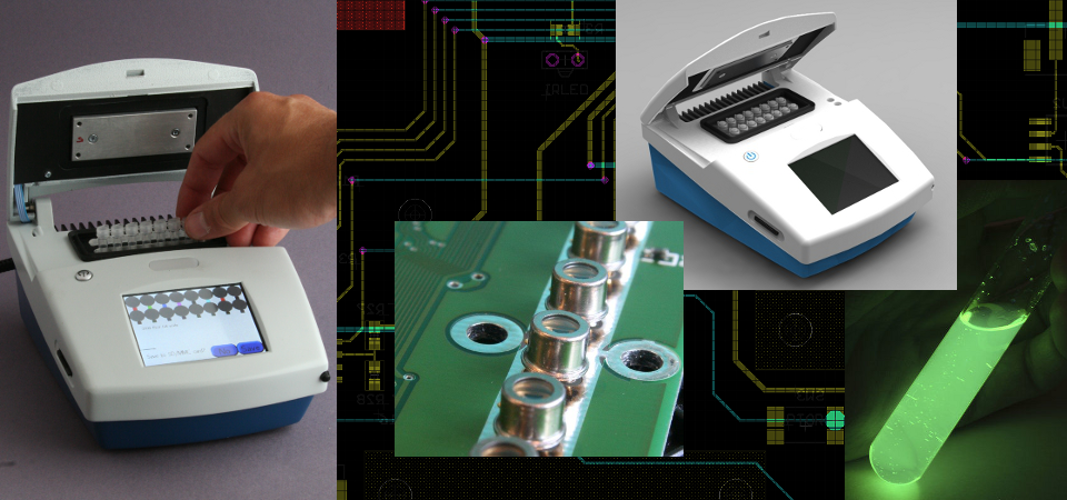
Core technology
As the light output from Lumora’s BART technology is higher than that of other bioluminescent assays and their detection algorithm is based on relative light levels, their instrument does not need to be as sensitive, complex and expensive. For some time we’ve been working with Lumora to develop a robust, portable and low-cost assay reader that allows both laboratory and field use of BART for applications in food safety, environmental monitoring, defence and medical diagnostics.
Proof of concept
The typical luminescence reader uses a photomultiplier-tube (PMT)—highly sensitive, but also expensive and vulnerable. Multi-channel PMT readers mechanically scan a single PMT across all channels and so have moving parts. Our concept design was based on using fixed photo diodes instead—one for each channel—so the first question we had to answer was: “Is a detector system based on low-cost photo diodes sensitive enough”? Tests run on quick proof-of-concept models confirmed this to be the case.
Breadboard
The next step was to build a breadboard system that could run a full assay with 8 samples simultaneously. The BART technology works best at elevated temperatures of around 55°C so we included a temperature controlled block that held 8 standard 200µl microtubes, using an off-the-shelf PID temperature controller. We also designed and build an 8-channel detector board, with a layout optimised for low noise as the photocurrents involved are in the range of a pico-ampere. The breadboard gave out raw light output measurement data that we subsequently processed off-line on a PC—at this stage of the project the most flexible solution. Results from our breadboard tests comfirmed that our multi-channel design was practically feasible.
Lab model
The commercial product was to be a stand-alone instrument that did not require connection to a PC, so our next step was to design and build an 8-channel lab model. From a number of mock-ups with different styling and different types of displays we eventually settled on a design with a QVGA colour touch screen. This lab model was used extensively to run assays in various locations, and was demonstrated to a number of parties interested in the BART technology. After some tweaking it proved to be robust and easy to use.
Product demonstrator
The lab model was used as a basis to build a series of slightly modified 16-channel product demonstrators for demonstration to, and evaluation by commercialisation partners. These demonstrators have sparked a lot of interest, and some have remained in use for several years.
Commercialisation
Lumora chose to commercialise their technology through partners. The design of the PDQ was used almost unchanged by Biogal Galen for veterinary use. A version with 96 channels reading a full microtitre plate at once was brought to market by 3M. Lumora itself was acquired by Erba Diagnostics and now operates as Erba Molecular.
